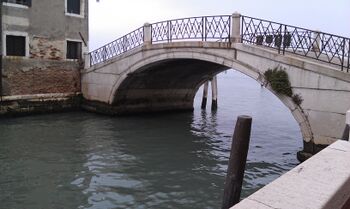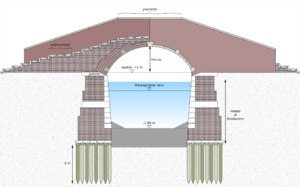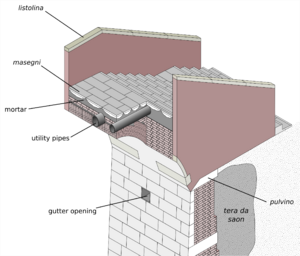Masonry Bridge: Difference between revisions
Created page with "''This page is an overview of a typical masonry bridge in Venice.'' {{for|a typical bridge|Bridge}} [[File:Masonry bridge 2.jpg|right|thumb|350 px|an example of a masonry bri..." |
No edit summary |
||
| Line 31: | Line 31: | ||
==External Links== | ==External Links== | ||
*Wikipedia article about masonry as a structural material: http://en.wikipedia.org/wiki/Masonry | *Wikipedia article about masonry as a structural material: http://en.wikipedia.org/wiki/Masonry | ||
[[Category:Bridges]] | |||
Latest revision as of 20:48, 6 December 2012
This page is an overview of a typical masonry bridge in Venice.

Masonry bridges are the most prevalent bridges and best suit the aged traditional appearance of Venice. These Bridges are generally made of three materials: Istria Stone, brick, and Mortar. [1]. The most renown masonry bridge is the Rialto.
Structure


The structure of a masonry bridge is the most complicated of the three bridge types prevalent in Venice. The base of a masonry bridge is composed of brick. In the first layer the bricks run vertically and are then met by a layer of horizontal brick (see diagram). The foundation of brick layers is followed by a layer of Mortar upon which the Bridge Steps and landings are built. Lastly the Bridge Walls are constructed in order to prevent pedestrians from falling into the Canals.[2]
Archways

The main structure of a masonry bridge, consists of the arch. Depending on the size and history of the arch, it can be made in 4 different styles.[3]
See Also
| |||||||||||
References
External Links
- Wikipedia article about masonry as a structural material: http://en.wikipedia.org/wiki/Masonry